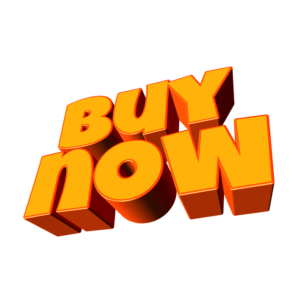10 Ways to Create an Effective Call to Action
What exactly is a Call to Action? You may have heard it called by its acronym, CTA. No matter what you call it, your CTA is exactly what it implies, a specific and actionable direction given to your reader. Therefore, their purpose is to become highly-effective lead generation tools. Done well, CTAs can, and do, generate interest in your product or service. However, done wrong they will just sit there and take up valuable ‘real estate’.
CTAs can be put to good use on your website, marketing materials, and even your books and ebooks. If you haven’t any clue what to do to create an effective CTA start with the basics. Don’t just use a garish ‘click here’ button; tell your reader exactly what they need to know to take the action you desire.
-
Table of Contents
Determine your goal.
Know what it is you want your reader to do. Do you want them to sign up for your newsletter, or merely visit your website? Perhaps your goal is to get them to join your membership or coaching program. Is your goal to create brand awareness or do you want more than that? Without a clear goal it is impossible to write a compelling CTA.
-
Know your audience.
One of the most important things you absolutely must do is to know who your target audience is. When you know this information you know how to meet their needs and what you need to tell them to get them to take action. If you have several different types of groups you are reaching for, writing copy to target each group is paramount to your success. It has been said that CTAs that are targeted to your audience have a 42% greater chance of success.

-
Decide how your CTA will be used.
Where you use your CTA is as important to know up-front as what your CTA will be. Will it be used only on the web or in printed marketing material and books too? Each of these different uses will require different looks and sizes. While the web and ebooks look great at low resolution, your printed materials require a much higher resolution. Your designer will know to create what you need. All you have to do is let them know every intended use.
-
Create an actionable path.
While your goal may be to increase sales, your CTAs often are actually a set of actions rather than just one. As an example, you might have a tweet that leads your followers to your blog or website. Once on your website you could offer a free downloadable report or short ebook. Then in that report or ebook your reader would find yet another actionable step. Free trials or limited time offers are always good tools to use to incentivize your captive audience. However, you need to ensure they are interested in what you have to offer. This is why an actionable path is often the better choice when it comes to creating your CTAs.
-
Compelling copywriting.
Begin by writing down benefits that your product or service provide. Then look at the list and choose the most desirable one. Now, write your copy and then read it. At this point, don’t just use it, read it, rewrite it, and do it again one more time. The tighter and clearer you can get your copy the easier it will be to attract your perfect client or customer. Also, as you are writing, keep your audience in mind. Use words and grammar that your targeted reader can clearly understand. If your audience is highly educated, such as doctors or scientists you would use more technical verbiage. On the ‘converse’, if they aren’t as sophisticated as all that, use shorter, simpler words and phrases. Did you understand that big-word? If not, you can clearly see why not to use big words in your copywriting.
-
Use your verbs.
Verbs are critical to effective copywriting. These are the words that show action, and that is exactly what you want your reader to do; take action! So, while you want to use benefits rather than features, you also need to use active rather than passive verbiage. Action words that begin your sentences and end them are the most effective use of marketing copywriting. In music, when I sing, if I mess up in the middle nobody notices. What they do remember is the beginning and the end. Marketing copy is much like that. So, keep that in mind while you’re thinking about exactly what to write.
-
Keep on-point.
Don’t ramble on. Clear and concise directions produce action. Don’t waste time and real estate trying to persuade your reader with excessive copy. State your purpose and then show or tell them what step(s) they need to take. In today’s NOW generation you will lose them before you begin if you ramble on-and-on.
-
By the Numbers.
 Don’t be afraid to use numbers in your design and writing. They not only call attention to facts, but they can break up the monotony of text. While “How to” may be good, a number may be even better. As an example I could have easily titled this article “How to Create an Effective CTA” but using a number instead tells you both that this article won’t waste your time and that it contains 10 tips. You could use your document’s page length on your CTA button, provide a graph or chart, or even add a count-down element. (Only 3 left; 6 days til this offer ends.)
Don’t be afraid to use numbers in your design and writing. They not only call attention to facts, but they can break up the monotony of text. While “How to” may be good, a number may be even better. As an example I could have easily titled this article “How to Create an Effective CTA” but using a number instead tells you both that this article won’t waste your time and that it contains 10 tips. You could use your document’s page length on your CTA button, provide a graph or chart, or even add a count-down element. (Only 3 left; 6 days til this offer ends.) -
Eye candy.
When you begin designing your CTA, if you are using an image such as an advertisement or landing page, be sure you know what you are doing. Much of design is specific to the medium. What I mean is that where you place your design will help to determine how it will be designed. When you add a CTA to your book or ebook, don’t just write out the text, make it stand out and compel your reader. Enable them to recognize that it is not just a continuation of the text. Be sure that your image, if you use one, looks clickable; if it doesn’t, they won’t! When your medium is digital, consider adding a link to a video about you or your product or service. If your CTA is being viewed on your reader’s iPhone they may have to pay surcharges to download your video. Therefore, supplying them with a link gives them the option of viewing it at a later time, directly on your website, rather than paying those extra fees. And, sending them to your website is, most likely, exactly what you want to do. The more ways you engage your audience the higher your conversion rates will be.
-
White space.
Give your reader breathing room. Don’t try to fill every space with copy. When you keep your copy clear and concise, leaving open space in your image or landing page is easy to accomplish. The goal of a CTA is to attract attention. Too often I have seen book covers and landing pages so filled with text that one quick look is all it takes for me to feel overwhelmed by the content to a point that I don’t read the copy at all. I would bet you have been there, done that too. Enlarge your text, create an interesting focal point. Use colors and fonts that your target audience is drawn to and you will be a whole lot better off. Remember the old adage: Less is More!
In closing let me remind you to test and evaluate. When you take the time to evaluate your results you may find that changing an element makes a difference in your conversion rates. Sometimes this is just the placement of your CTA while other times it could be the verbiage itself that needs adjusting. Perhaps you don’t need a button at all! Enlarging and enhancing key text might be all that is needed. But, how will you know if you don’t test and evaluate your results?
About the author: Ginger Marks

For nearly 40 years Ginger Marks has owned several businesses including a multi-million dollar surgical clinic and a bar-b-que restaurant. She has won awards for both her publishing company, DocUmeant Publishing, registered in New York City (2012) and her design firm, DocUmeant Designs (2015), as well as being a best-selling author.
In 2009 Ginger wrote the first edition of her book, Weird & Wacky Holiday Marketing Guide. Her 2014 Weird & Wacky Holiday Marketing Guide reached the well-deserved status of the Number Two Best-Seller in the Marketing Category on Amazon. Her 2015 Edition has been awarded the Florida Authors & Publishers Association President’s Award in the Business Category!




I really like your writing style, wonderful information, regards for posting :D. “Freedom is the emancipation from the arbitrary rule of other men.” by Mortimer Adler.
Huey,
I am pleased you found the article well written and informative. I hope you will put the information to use now that you are aware.
To your success,
Ginger